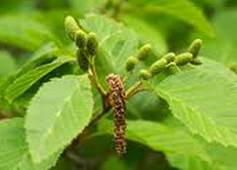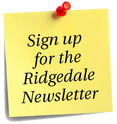 Alnus sinuata, Sitka alder Alnus sinuata, Sitka alder We can think of at least 180 great forest garden & perennial crops for cold climate Sweden. Want to hear about them? Over the course of the next year we will profile 5 a week on the blog. Perennial plants and crops offer a low energy, oil & resource input based foundation for future-proof agricultures. By default if an agriculture is to be called regenerative the bottom line is that it must be soil building, not soil depleting. Relentless deep tillage & poor soil husbandry (wifery?!) contributes to the majority of the 24 billion tons of topsoil lost every year on planet water. We are going to be focused on holistic polyculture grazing and perennial production at ridgedale over most of the site as this represents the most effective way to restore our degraded landscape, produce high value produce and ensure the future resource base we are managing holistically for in our decision making.  Genus Alnus Species sinuata Common Name Sitka alder Form shrub Habit clumping Origin North America Light sun Moisture wet to mesic N fixing yes (no data) Sitka alder is a valuable shrub for slope and stream bank stabilization and general erosion control on disturbed, nutrient poor sites. It can be planted for acid, coal and copper mine spoil reclamation, soil enrichment, and other land rehabilitation efforts where an easy to establish, deciduous shrub is desired. The species may also be useful in hedgerows, the shrub row of field windbreaks, and other conservation buffers. As host to symbiotic nitrogen fixing bacteria in its roots, Sitka alder is particularly important for improving forest site productivity and is sometimes used as a companion or nurse shrub in conifer plantations (Compared to red alder (Alnus rubra)), Sitka alder is considered potentially less competitive with young conifers because of its smaller stature and slower growth. It is not used for commercial timber but is a source of firewood. Sitka and green alder had several medicinal uses. Pistillate catkins of Sitka alder were crushed and eaten raw for treating gonorrhea. The inner bark or ointments made from it were used to treat skin problems such as wounds, skin ulcers, and swellings. Fresh scraped bark juice was applied to the skin to relieve itching from rash and a fresh infusion was made to treat poison ivy in the US. The bark was also used for treating constipation, jaundice and diarrhea. Leaf decoctions were used to treat burns and swollen wounds. Alder roots are high in tannins and were boiled and drunk as an astringent. A decoction of stems was apparently drunk as a remedy for colds or dried stems were placed in the nose or chewed for the same reason. The catkins of Sitka alder can be eaten raw or cooked but have a bitter taste, and, well, there is a lot more tasty things to eat. Apparently, young buds and inner bark are edible as well, but the bark will cause vomiting if not dried or aged first. OUR FRIENDS AT PFAF HAVE AN AMAZING DATABASE OF SPECIES (UK BASED); Alnus sinuata
Sign up to our newsletter for articles/ updates you choose & fortnightly awesome book giveaways...
0 Comments
Leave a Reply. |
Details
Like us on FB Below for regular updatesStay up to date with customized updates you want to receive
Upcoming coursesArchives
December 2016
Categories
All
|

 RSS Feed
RSS Feed